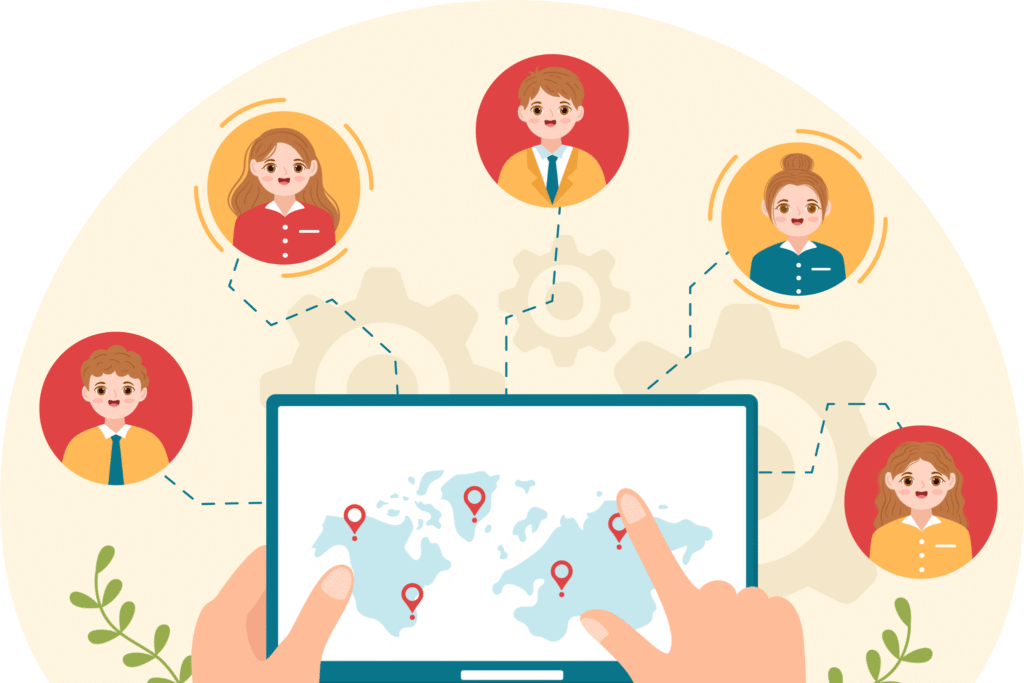Trending Topics / News
Smog: Causes, Effects, and Solutions for a Cleaner Future

Introduction
Smog has become one of the most dangerous environmental and health challenges faced by modern cities around the world. Whether it’s Lahore, Delhi, Beijing, or Los Angeles, millions of people wake up every day under a blanket of thick grey air that harms their health, reduces visibility, and impacts everyday life. Smog is more than just dirty air it’s a toxic mixture of pollutants that affects our lungs, heart, crops, climate, and overall quality of life. With rapid urbanization, industrial growth, and increasing vehicle usage, smog has turned into a global crisis.
This blog explains what smog is, how it forms, its types, causes, effects on human health and the environment, and most importantly what we can do to control it.
What is Smog?
The word smog is a combination of two words: smoke and fog. It was first used in the early 20th century to describe the foggy air in industrial cities filled with coal smoke. Today, smog refers to polluted air that reduces visibility and contains harmful chemicals like nitrogen oxides (NOx), sulfur dioxide (SO₂), carbon monoxide (CO), ozone (O₃), and particulate matter (PM2.5 and PM10).
Types of Smog
1. Classical or London Smog
- Also called sulfurous smog.
- Mainly caused by burning coal and fossil fuels.
- Contains sulfur dioxide and smoke particles.
- Common in cold, humid climates.
2. Photochemical or Los Angeles Smog
- Occurs in warm, sunny cities with heavy traffic.
- Caused by chemical reactions between sunlight and pollutants like nitrogen oxides and hydrocarbons.
- Produces ozone and other toxic chemicals.
- Appears as brown or yellowish haze.
How is Smog Formed?
Smog forms due to a combination of human activities and atmospheric conditions:

- Emission of pollutants from vehicles, factories, burning waste, and power plants.
- Sunlight reacts with chemical gases like NOx and VOCs (Volatile Organic Compounds).
- Temperature inversion traps pollutants close to the ground, preventing them from rising into the atmosphere.
- Low wind speed and high humidity make smog stay longer in the air.
Major Causes of Smog
1. Vehicle Emissions
- Cars, trucks, buses, and motorcycles release carbon monoxide, nitrogen oxides, and hydrocarbons.
- In big cities, vehicles contribute up to 70% of air pollution.
2. Industrial Pollution
- Factories, brick kilns, and power plants release harmful gases and smoke.
- Burning coal and fossil fuels increases sulfur dioxide and particulate matter.
3. Burning of Crop Residue (Stubble Burning)
- Farmers burn leftover crops to clear fields.
- This releases massive amounts of smoke, causing smog in nearby cities.
4. Construction and Dust
- Construction sites produce dust particles that mix in the air.
- Dry and windy conditions make it worse.
5. Deforestation
- Trees absorb carbon dioxide and produce oxygen.
- Cutting them down reduces natural air purification.
6. Climate Change
- Rising temperatures and changing wind patterns increase smog frequency.
Harmful Effects of Smog
1. Health Effects
Smog contains tiny particles that enter the lungs and bloodstream.
- Respiratory diseases: asthma, bronchitis, pneumonia.
- Heart problems: high blood pressure, heart attacks.
- Irritation: burning eyes, throat irritation, coughing.
- Long-term risks: lung cancer, decreased life expectancy.
- Children and elderly people are most vulnerable.
2. Environmental Effects
- Smog blocks sunlight, affecting plant growth.
- Reduces crop yields by damaging leaves.
- Harmful ozone depletes soil nutrients and weakens vegetation.
3. Poor Visibility and Accidents
- Thick smog reduces visibility on roads and airports.
- Leads to traffic accidents and flight delays.
4. Economic Loss
- Increased healthcare costs.
- Industries and schools shut down during severe smog.
- Tourism declines.
Smog in South Asia
Countries like Pakistan, India, Bangladesh, and China suffer severe smog during winter.

Example: Lahore and Delhi
- AQI (Air Quality Index) often exceeds 400, considered hazardous.
- Causes: vehicle fumes, crop burning, industrial smoke, winter fog.
- Schools are closed, face masks are recommended, and hospitals see a rise in respiratory cases.
Air Quality Index (AQI)
| AQI Level | Air Quality | Health Impact |
|---|---|---|
| 0–50 | Good | Minimal impact |
| 51–100 | Moderate | Acceptable |
| 101–150 | Unhealthy for sensitive groups | |
| 151–200 | Unhealthy | Breathing problems |
| 201–300 | Very Unhealthy | Serious health effects |
| 301+ | Hazardous | Emergency conditions |
How to Protect Yourself from Smog
- Wear N95 or N99 masks when going outside.
- Avoid outdoor activities early morning or late evening.
- Keep doors and windows closed to prevent polluted air from entering.
- Use air purifiers indoors if possible.
- Stay hydrated and increase vitamin C intake.
- Plant indoor air-purifying plants like snake plant, aloe vera, and peace lily.
Long-Term Solutions to Reduce Smog
Government Actions
- Enforce strict vehicle emission laws.
- Promote electric vehicles and public transport.
- Shift industries to cleaner fuels and modern technology.
- Ban crop burning and support farmers with machinery.
- Increase urban green spaces and tree plantations.
Public Responsibility
- Reduce car usage use carpooling and public transport.
- Avoid burning trash and plastic.
- Plant more trees.
- Spread awareness about the impact of smog.
Future Technologies to Fight Smog
- Smog Towers: Devices that filter polluted air in cities.
- Electric and Hybrid Vehicles.
- Solar and Wind Energy replacing coal power plants.
- Green Building Designs with rooftop gardens and air-cleaning walls.
- AI and sensors to monitor real-time pollution levels.
Conclusion
Smog is not just an environmental problem it is a public health emergency affecting millions. It blocks our skies, damages our lungs, harms our economy, and steals our natural beauty. But the good news is that smog can be controlled if governments, industries, and citizens work together.
Cleaner fuels, better transportation, modern technology, and responsible behavior can lead us toward a future where the air is clear, the sky is blue, and people breathe without fear.
Remote Work & Productivity
The Future of Remote Work: Opportunities, Challenges, and Best Practices

Introduction
Remote work is no longer just a workplace perk it has evolved into a global movement reshaping how businesses operate and how employees experience their professional lives. Once considered an alternative for freelancers and digital nomads, remote work became mainstream after the COVID-19 pandemic forced organizations worldwide to rethink their office models.
Today, remote work has become a permanent fixture in the modern workforce. In fact, a 2025 survey by Gartner found that over 70% of companies now offer hybrid or fully remote work options. But with this transformation comes a new set of challenges, opportunities, and cultural shifts that leaders and employees alike must navigate.
In this blog, we’ll take a deep dive into the rise of remote work, its benefits and challenges, and the best practices companies and individuals can adopt to thrive in this evolving work environment.
Evolution :
Remote work is not entirely new. Even before the internet, many professionals worked from home offices, particularly writers, researchers, and consultants. However, technological advancements like high-speed internet, cloud storage, video conferencing, and collaborative tools have turned remote work into a viable option for almost every industry.

- Pre-2000s:It Remote work was rare and usually limited to specific roles.
- 2000–2010: With broadband and laptops becoming widespread, telecommuting grew slowly.
- 2010–2019: Platforms like Slack, Zoom, and Trello made distributed teams more practical.
- 2020–2022: The pandemic acted as a catalyst, forcing organizations to embrace remote work almost overnight.
- 2023–2025: Hybrid models and global distributed teams are now considered the “new normal.”
The evolution clearly shows that remote work is not a passing trend it’s an integral part of the future of work.
Benefits
1. Flexibility and Work-Life Balance
It empowers employees to design a schedule that fits their personal lives. Whether it’s attending a child’s school event, avoiding rush-hour traffic, or taking a midday walk, flexibility fosters greater job satisfaction and improved mental health.
2. Increased Productivity
Contrary to early skepticism, multiple studies show remote employees are often more productive. Without office distractions and lengthy commutes, workers can focus better on deep work. For many, this translates to higher output in fewer hours.
3. Cost Savings
- For employers: Reduced need for physical office space, utilities, and overhead costs.
- For employees: Savings on commuting, work attire, and meals.
According to Global Workplace Analytics, companies can save an average of $11,000 per employee annually by adopting remote work.

4. Access to a Global Talent Pool
It work removes geographical barriers, allowing businesses to hire the best talent worldwide. This is especially powerful for startups and growing companies that need specialized skills but may not find them locally.
5. Environmental Benefits
With fewer cars on the road, remote work contributes to lower carbon emissions and promotes sustainable business practices.

Challenges :
While the benefits are significant, remote work is not without obstacles.
1. Communication and Collaboration Gaps
Working across different time zones or relying heavily on digital communication tools can lead to misunderstandings and delays.
2. Isolation and Mental Health Concerns
Remote employees often miss the social interaction of an office environment, leading to feelings of loneliness or disconnection.
3. Difficulty in Work-Life Separation
When home becomes the workplace, employees sometimes struggle to switch off, resulting in longer working hours and potential burnout.
4. Security Risks
Handling sensitive company data outside the office introduces cybersecurity vulnerabilities. Without proper protocols, remote work can put businesses at risk of data breaches.
5. Inequity Between Remote and On-Site Workers
In hybrid models, remote workers may feel overlooked for promotions or excluded from key decisions compared to their in-office counterparts.
Best Practices for Thriving in Remote Work
For Employers
- Establish Clear Communication Channels
Use platforms like Slack, Microsoft Teams, or Asana to ensure that everyone is aligned. Set clear expectations about response times and preferred communication methods. - Promote a Strong Remote Culture
Celebrate achievements virtually, encourage team-building activities, and make sure remote employees feel included. - Provide the Right Tools and Training
Equip teams with project management software, cybersecurity tools, and training to help them adapt to remote workflows. - Encourage Flexibility with Accountability
Focus on outcomes rather than hours. Use measurable goals and key performance indicators (KPIs) to track progress. - Prioritize Employee Well-Being
Offer mental health resources, wellness programs, and encourage employees to set healthy boundaries between work and life.
For Employees
- Create a Dedicated Workspace
A separate area for work reduces distractions and helps maintain a professional mindset. - Stick to a Routine
Start and end your workday at consistent times to maintain structure. - Communicate Proactively
Since face-to-face interactions are limited, over-communicate updates and progress to managers and colleagues. - Invest in Skills Development
It requires self-discipline, adaptability, and digital proficiency. Online courses and certifications can give employees an edge. - Take Breaks and Prioritize Health
Short walks, stretching, and mindful breaks can reduce burnout and improve focus.
The Future of Remote Work
Looking ahead, remote work will continue to evolve. Here are some predictions:
- Hybrid Models Will Dominate: A balance between remote and office days will become the standard.
- AI and Automation: Tools powered by artificial intelligence will streamline workflows, from scheduling meetings to analyzing performance.
- Virtual Reality (VR) Workspaces: Companies are already experimenting with VR for immersive collaboration.
- Global Teams as the Norm: Borders will matter less as businesses increasingly rely on international talent.
- Focus on Results, Not Hours: The traditional 9-to-5 structure will give way to more outcome-based performance metrics.
Frequently Asked Questions (FAQs)
1. Is remote work here to stay?
Yes. While not all jobs can be remote, industries ranging from tech to finance have already embedded remote and hybrid models into their long-term strategies.
2. Do remote workers get promoted less?
Not necessarily. Companies that prioritize performance over presence ensure remote employees have equal opportunities. However, employees must remain visible by communicating proactively.
3. How can companies prevent remote employee burnout?
Encouraging work-life boundaries, offering wellness resources, and promoting regular breaks are key to preventing burnout.
4. Is remote work more productive?
Many studies show remote employees can be more productive, but success depends on proper infrastructure, communication, and individual discipline.
5. What industries benefit the most from remote work?
Tech, marketing, consulting, finance, education, and customer support are leading industries benefiting from remote work flexibility.
Conclusion
Remote work is more than a trend it’s a revolution in how we define work itself. The shift has given employees newfound freedom and employers broader opportunities, but it has also introduced unique challenges. Organizations that embrace flexibility, invest in digital infrastructure, and foster inclusive cultures will be the ones that thrive in this new era.
For individuals, success in remote work depends on discipline, communication, and a proactive approach to personal well-being. As technology continues to advance and companies adapt, remote work will only become more seamless, productive, and widespread.
The future of work is not about where you work it’s about how you work best. And for many, that future lies in remote work.
Tech
Top Programming Languages to Learn in 2025

Introduction
As we navigate deeper into 2025, the programming landscape continues its dynamic evolution driven by AI, cloud-native paradigms, edge computing, and reliability demands. Choosing the right language to learn is more than just following trends it’s about aligning with your goals, whether that’s building high-performance systems, developing AI models, or exploring emerging domains like Web Assembly and quantum programming. This guide explores the most relevant, in-demand, and forward-looking programming languages for 2025, gleaning insights from major industry sources, surveys, and expert commentary.
1. The Classics: Ubiquitous & Essential
Python
Undoubtably the powerhouse of the modern programming era. As noted in Pluralsight’s forecast for 2025, Python remains #1, largely due to its dominance in AI, data science, and ease of use Pluralsight. StackOverflow survey data highlights a 7-percentage-point adoption increase from 2024 to 2025 Stack Overflow Surveys. Recruiter data underscores its prevalence, with ~45% seeking Python developers Itransition.
Java
A solid, scalable language beloved in enterprise environments. Ranked consistently high (#2 per Pluralsight) and still in demand given its stability and broad ecosystem.

JavaScript
Powering nearly every website, JavaScript continues to command a vital role in web development. Pluralsight ranks it #3 for 2025 .
2. The Stalwarts: Performance, Systems & Enterprise (≈400 words)
C++
Ranking #4 in Pluralsight’s 2025, C++ remains unmatched in scenarios demanding raw performance—real-time systems, high-frequency trading, simulations, and more. Business Insider emphasizes its continued relevance in finance, especially on Wall Street Business Insider.
C#
At #5 in Pluralsight’s forecast C# blends productivity and reliability for desktop apps, enterprise systems, and game development via Unity.
C
Still essential for low-level programming and legacy systems, C holds the #8 spot in Pluralsight’s 2025 ranking.
3. Web & Enterprise-Friendly: Modern Trends
TypeScript
SQL
Vital for data manipulation, SQL is ranked #7 in Pluralsight’s list and remains indispensable in data-centric roles.

Go (Golang)
Making its mark among newer languages, Go is placed #9 in Pluralsight’s .Its simplicity, concurrency model, and scalable performance make it a favorite in cloud-native environments.
PHP
Still powering over 75% of server-side web workloads, PHP claims the #10 spot.
4. In-Demand Across Recruiters
According to Itransition’s April 2025 insights, recruiters most actively seek:
- Python (~46%)
- JavaScript (~42%)
- Java (~40%)
- C#, C++, Go, Rust, TypeScript, HTML, SQL, Ruby, PHP, Kotlin, Swift rounding out the top 14 languages Itransition.
5. Emerging & Cutting-Edge Languages
Rust
Though not yet mainstream, Rust is gaining traction for its memory safety and performance. Pluralsight notes it moving toward the top 10 Pluralsight. Recruiters also include it within the highly sought-after languages list Business Insider.
Mojo
Developed by Modular Inc., Mojo offers Python-like syntax with near C++ performance and is gaining attention in AI development Wikipedia. Its typing system and high performance make it a compelling choice for AI-first programming.

MoonBit
A WebAssembly-native language optimized for fast, small binaries—ideal for cloud or edge deployments. In beta as of June 18, 2025 Wikipedia, Moon Bit draws from Rust, Go, Swiftoptimized for Wasm performance .
Gleam
A statically typed, functional Erlang/JavaScript targeting language built for concurrency and type safety. InfoQ noted its 1.0 release in March 2024 .
V (Vlang)
Published in 2019 and in beta, V emphasizes readability, speed, and maintainability drawing inspiration from Go, Rust, and Swift .
Carbon
Created by Google as a successor to C++, Carbon offers two-way interop with C++. MVP is expected in late 2026, with full release after 2028 . A language to watch for future performance and migration scenarios.
6. Specialized & Future-Facing Languages
Quantum Programming: Qutes
While quantum computing is budding, Qutes—a high-level language built upon Qiskit—simplifies quantum algorithm development by allowing intuitive syntax and seamless classical-quantum integration arXiv.
Though niche, for anyone eyeing quantum software development, experimenting with Qutes can offer a meaningful edge.
7. Insights from the Field & Alternate Opinions
A Reddit thread summarized a pragmatic perspective: “There will always be demand for Java, C#, C++, JavaScript and PHP” Reddit a reminder that while trends shift, fundamentals persist.
Another recommendation encourages learning functional paradigms via Erlang or F#, to deepen coding mindset, even if those languages are not in top adoption lists DEV Community.
8. Quick Comparison Table
| Category | Languages & Highlights |
|---|---|
| Ubiquitous & Fundamental | Python, Java, JavaScript (AI, enterprise, web dominance) |
| Performance & Systems | C++, C#, C |
| Modern Web & Enterprise | TypeScript, SQL, Go, PHP |
| Recruiter Favorites | Rust, Go, TypeScript, Kotlin, Swift (Rising demand) |
| Emerging & Experimental | Mojo, MoonBit, Gleam, V, Carbon (Wasm, AI, interop) |
| Future/Niche | Qutes (Quantum Programming) |
9. Recommendations Based on Goals
- Breaking into AI/Data Science: Start with Python, and explore Mojo for high-performance use cases.
- Web or Full-Stack Development: Master JavaScript/TypeScript, consider Python for backend and APIs.
- Systems/Performance Engineering: Invest time in C++, learn Go and Rust for modern, safe concurrency.
- Cloud & Infrastructure: Go excels in microservices; experiment with MoonBit for cutting-edge WebAssembly deployments.
- Enterprise Roles (Finance, Backend): Java, C#, and SQL remain stable bets.
- Innovation & Research: Explore Gleam, V, Carbon for fresh paradigms. For quantum, begin with Qutes.
10. Learning Resources & Next Steps
- Online Courses: In 2025, platforms like Harvard’s CS50, MIT, Stanford, Google, and Microsoft offer free beginner coding courses in Python, Java, C, R, Scratch .
- Practice: Build real-world projects using platforms like GitHub, Codeforces, Kaggle, or open-source contributions.
- Stay Updated: Follow TIOBE, Pluralsight insights, and StackOverflow surveys to catch trends early.
Conclusion
There’s no single “best” programming language in 2025—your choice should align with your interests and career trajectory. Python, Java, JavaScript, C++, C#, Go, and Rust form the cornerstone of practical, modern development. Emerging players like Mojo, MoonBit, Carbon, and Gleam are carving niche spaces, especially in AI and WebAssembly domains. Whether you’re aiming to scale enterprises, speed up algorithms, innovate with quantum tech, or ride the next wave of performance computing—there’s a language ready to empower your journey.

Trending Topics / News
Why Everyone’s Talking About the 2025 Solar Eclipse, Even Though It Isn’t Happening

Introduction
Lately, social media platforms have been flooded with posts, videos, and conversations about a supposed solar eclipse happening in August 2025. People across TikTok, Instagram, and YouTube are sharing their excitement, claiming the skies will darken and a major cosmic event is on the horizon. But according to astronomers and space agencies, there’s just one problem. There is no solar eclipse happening this month.
So how did this rumor begin, and why did it spread so quickly? In this post, we’ll look at what sparked the buzz, what the science really says, and why this trend matters.
Where Did the Buzz Start?
The solar eclipse talk seems to have started with a few viral TikTok videos in late July. Some creators posted countdowns, skywatching tips, and charts that looked like real astronomical predictions. These videos gained momentum fast, especially among users who enjoy science content or remember the April 2024 total eclipse in the United States.
Soon, dozens of other accounts joined in, sharing edits, speculations, and so-called facts about the “upcoming eclipse.” But when viewers looked for confirmation from NASA, news media, or scientific observatories, there was none. That’s because this eclipse simply isn’t real.
Why It Spread So Fast
False information tends to spread quickly online, especially when it’s tied to exciting or emotional topics. Space events are a perfect example. People love the idea of looking up at the sky and seeing something rare and beautiful. When influencers or content creators talk confidently about something like an eclipse, it can seem believable, especially when visuals or technical terms are used.
Another reason for the trend’s growth is the way social media algorithms work. Once a few posts gained attention, more users saw the same topic in their feeds. This led to a wave of engagement and discussion, even if the original claim wasn’t true.
What Scientists Say
Astronomers have confirmed there is no solar eclipse in August 2025. The next significant eclipse visible in the United States will occur on August 12, 2026. That event will pass over parts of the western and southern U.S., and preparations for that real eclipse are already underway in some observatories.
If you’re following updates from reliable sources like NASA or the American Astronomical Society, you’ll notice there’s no mention of any solar eclipse in August 2025. Sites like TimeandDate.com also maintain accurate eclipse calendars.
What This Trend Tells Us
While this rumor might seem harmless, it highlights a real issue with how fast misinformation spreads online. People are naturally curious and eager to be part of something exciting. But without checking credible sources, false claims can go viral and create confusion.
This is a great example of why digital literacy is so important. We all need to ask questions, fact-check what we see, and avoid spreading unverified content.
Looking Ahead to the Real Eclipse
The real solar eclipse to watch for is on August 12, 2026. That event will be visible across several states in the U.S. and will likely draw large crowds, as did the eclipses in 2017 and 2024. It’s a great time to plan a trip or join a viewing party, but for now, there’s nothing happening in August 2025 when it comes to eclipses.

Final Thoughts
The solar eclipse buzz of August 2025 turned out to be more trend than truth, but it offered a useful reminder of how powerful social media can be in shaping public perception. Before you share the next big event or countdown, take a moment to check the facts. Your followers will thank you for it.
If you want to stay up to date with real celestial events, visit NASA’s eclipse portal or use trusted astronomy apps. There’s plenty of real wonder in the sky, no need to make any up.
Want to track the next real eclipse?
Check out NASA’s eclipse calendar and mark your calendar for August 12, 2026.
-

 Fashion3 months ago
Fashion3 months agoThese ’90s Fashion Trends Are Making a Big Comeback in 2025
-

 Fashion3 months ago
Fashion3 months agoTop Fashion Trends to Follow in August 2025
-

 How-To Tutorials & Troubleshooting3 months ago
How-To Tutorials & Troubleshooting3 months agoHow to Fix Missing Pantone Color Books in Adobe Illustrator 2024-2025 (Free and Easy Method)
-

 Entertainment3 months ago
Entertainment3 months agoTrending Soundtrack: “KPop Demon Hunters”
-

 Entertainment3 months ago
Entertainment3 months agoSquid Game Season 2: Deadlier Games, Deeper Secrets & Darker Drama




